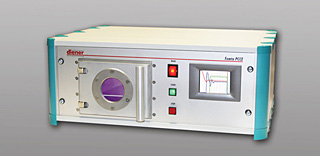Plasma etching is separated into four mechanisms. One mechanism is sputtering. Sputtering occurs when positive ions are accelerated across the plasma sheath and hit the substrate material. Some material is removed as a result due to the kinetic energy that was transferred onto the surface atoms which are removed from the surface.
This mechanism differs from the other three plasma etching mechanisms because the interaction is only mechanical. Some disadvantages of sputtering are the lack of selectivity and slow etching rates. Selectivity is the reactive species’ capability to remove solely the material that is supposed to be removed and to avoid removing the masking material (along with the substrate material underneath). The masking material’s purpose is to prevent plasma etching in that area.
Another method of plasma etching is chemical. The only purpose of the plasma is to provide gaseous etchant species. Ions do not hit the substrate material in this mechanism. Active species in the gas phase react with substrate material in order to form a volatile product.
Because of the fact that undesired side reactions will be less likely to happen under certain conditions (by changing the temperature or amount of reactants for example), chemical etching is more selective than the other three mechanisms.
Ion-enhanced energetic and ion-enhanced inhibitor mechanisms involve encounters of both neutral species and ions on the surface. The combination of neutral species and ions can cause more substrate material to be removed than the chemical or sputtering mechanisms separately.
In ion-enhanced energetic mechanisms, neutral species have negligible or no affect until ions increase the reactivity of the substrate material with the neutral species.
The plasma (from the plasma etching system) provides etchants for chemical etching, ions for anisotropic etching, and inhibitor precursor molecules that adsorb or deposit on the substrate material and form an inhibitor layer. This inhibitor layer can stop etching reactions from occurring.
In the ion-enhanced inhibitor mechanism, the ions that hit the surface prevent an inhibitor layer from forming and remove the barrier layer, which means the surface is exposed to plasma etchants for plasma etching.


